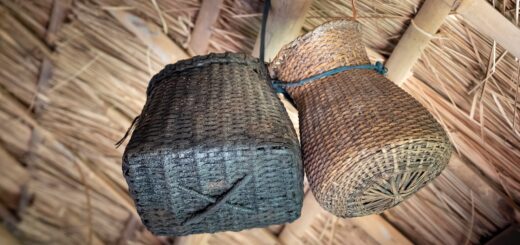The Rich History and Cultural Significance of Ayahuasca: A Journey Through Time
The history of Ayahuasca is deeply rooted in the rich spiritual tradition of indigenous tribes in the Amazon rainforest. It is a psychoactive brew traditionally used for medicinal and spiritual practices, linking humans to their ancestors and the mysteries of the universe. The use of this plant medicine is a testament to the knowledge and mastery of herbalism exhibited by these tribes over centuries.
Ayahuasca is a combination of two native plants: Banisteriopsis caapi, a vine, and Psychotria viridis, a leafy plant. The vine produces the necessary enzymes that inhibit the body’s digestion of the DMT (dimethyltryptamine) found in the leaves, allowing the psychoactive substance to enter the bloodstream and have its potent effect.
The exact origin of Ayahuasca use is unclear, primarily because the practices surrounding it predate written history. However, some archeological evidence suggests it has been in use for at least 1,000 years, with other sources citing usage dating back to 5,000 years. The earliest clear evidence of use comes from a bundle containing Ayahuasca residue discovered in a cave in Bolivia, carbon-dated to approximately 1,000 AD.
Despite the varying timelines, one thing is clear, the indigenous tribes recognized the plant’s healing properties and spiritual benefits, making it central to their shamanism practices. These tribes believe that the Ayahuasca brew serves as a bridge to the spiritual realm. The visionary experiences triggered by the drug provide direct communication with their ancestors and spiritual beings.
Additionally, shamans employ this sacred ritual not just for spiritual pursuits but for healing. They believe that the brew can cure illnesses, dispel bad luck, and purify the soul. The brew’s physical effects include vomiting and diarrhea, which the tribes view as a necessary purge of negative energy and toxins from the body.
In recent years, much curiosity has grown around Ayahuasca outside the Amazon rainforest. Western scientists and explorers brought back tales of their experiences with Ayahuasca, allowing the knowledge of this potent brew to reach a wider audience. This sparked global scientific interest in the healing properties of Ayahuasca, leading to numerous pharmacological and psychological studies.
As a result, Ayahuasca has gradually been incorporated into Western holistic medicine. It has been used experimentally to treat various conditions, including depression, PTSD, and substance abuse. However, its legality is still a contentious issue in many parts of the world due to its psychoactive properties.
Regrettably, the rising popularity of Ayahuasca in the West has led to the commercialization of this sacred ritual. This has resulted in criticisms and concerns, primarily because the cultural significance of Ayahuasca is often ignored or misunderstood by outsiders. Furthermore, the reckless use of a powerful psychoactive substance can lead to negative psychological effects, which can be traumatizing or dangerous without the appropriate guidance and precautions.
The history and cultural significance of Ayahuasca is a tribute to the wisdom of the Amazon’s indigenous tribes. Their understanding of the intertwining of nature and the human psyche, their mastery of plant medicine, and the profound spiritual practices reveal a window into an age-old civilization living in harmony with the world around them. The shamanism practices surrounding Ayahuasca continue to serve as a testament to their respect and reverence for nature.
In conclusion, the history of Ayahuasca highlights humanity’s long-standing fascination with the mind-altering and healing potentials of natural substances. As our understanding of this potent brew deepens through scientific and cultural exploration, one lesson becomes clear: Ayahuasca deserves to be handled with the same respect and reverence that the indigenous tribes in the Amazon rainforest have shown it for centuries.

